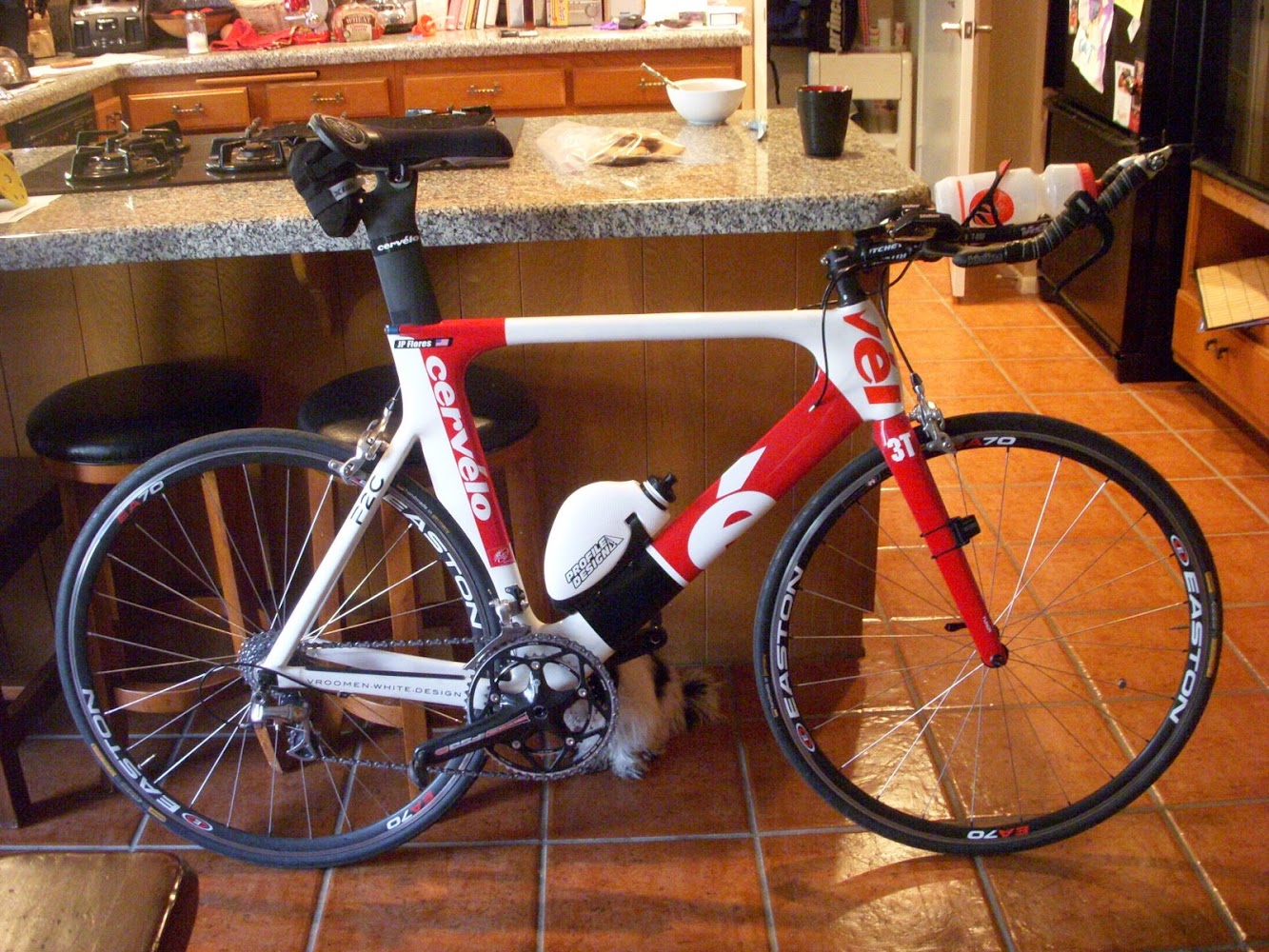
The new frame is now built up. To quote Ferris Bueller, "It is so choice".
I moved the parts over from my old bike (a 2006 QR Tequilo), with a few changes, mostly related to fitting me on the new frame.
Switched from 250mm to 270mm aero bar extensions.
Switched from 172.5 to 175 cranks. I kept the same 53/39 chainring combination.
Switched from 110mm, +5 degree stem to 120mm neutral stem
I took it for a maiden voyage on Sunday and, to be honest, I was surprised at the difference in the ride quality over my Quintana Roo Tequilo. I expected the Cervelo to ride better and have better power transfer, but what I didn't expect was the vast difference in both areas. Simply put, it was night and day. Now I get why people fall all over themselves about the P2C and the Cervelo flagship bike, the P3C (P4 nothwithstanding... its not available yet).
Truthfully, the P3C would not be a good fit for me, due to my long legs/short torso proportions... the head tube on that bike is too short. So, in all honestly, the P2C is probably the best possible bike for me.
A couple notes - This is right at 80 degrees, the front of the saddle is about 1cm behind the bottom bracket and saddle to bar drop is 12 cm. Steeper and lower than the set-up on my QR. More about the fit differences will be forthcoming in another post.
I decided to skip the rear bottle carrier contraption and keep the amount of stuff hanging off the bike to a minimum. We've all seen the bikes in transition with 4 bottles (2 on the frame, 2 in a rear carrier), bento boxes, CO2 canisters, spare tires and various other items hanging on the bike. Not to mention half a dozen gel packets taped to the top tube. I'm going the minimalist route.
For HIM racing (and probably IM as well), I'm set up with 2 bottles and a small saddle bag with a flat repair kit and maybe a bento box with a GU flask and salt tablets. That's it.
I've always disliked the standard front-mount aero bottles that you see on many triathlon bikes. They tend to rattle on rough pavement and when they are full tend to splash fluid all over the place. And if you have to set the bike down (for a flat repair for example) the open top designs allow all your fluid to spill out. And refilling on the go is a hassle as well. So, instead of a aero front bottle, I rigged up a standard bottle holder with a Specialized Rib Cage and eight (8) zip ties. A simple and cheap alternative. Now, instead of taking on a bottle at an aid station and pouring the contents into my front aero bottle, I can simply slide it into my standard cage. No fumbling around.
And for the downtube, I choose the Profile Design Razor Bottle & Cage. Between the two bottles, I have 40 oz of fluid capacity... more than enough for a half-Ironman or even a full Ironman event due to the abundance of aid stations on the course. And I've eliminated the need for a rear bottle carrier, which helps to cut some weight and any risk of losing my nutrition due to a bottle launch.
Check it out
top view

front view (how's that for aero?)

top view with bottle removed to reveal zip ties. I used a bit of electrical tape on the extensions under the front set of zip ties to prevent them from slipping.

bottom view, zip tie detail. After taking the snapshot, I realized I put the zip ties over the shifter cables. It didn't cause any problems... but I'll fix this to make the setup a bit tidier.

I tested this set up during a 40 mile ride on Saturday. It was rock solid on some very rough sections and drinking while in the aero bars was easy to manage as well. The only thing I had to watch out for was making sure the valve was completely closed before replacing the bottle in the cage, or it would leak.
Other than that, it's a great setup. Very easy to install, lightweight, cheap and as, if not more, aerodynamic than any other setup out there. It's all good.